




As small as the Utah State University campuses may feel to some, the diverse backgrounds of USU faculty can help students become more familiar with perspectives, cultures and experiences of people not originally from Utah.
Maria Luisa Spicer-Escalante, who grew up in Mexico City, is a professor of linguistics and Spanish in the Department of World Languages and Culture at USU. Spicer-Escalante said USU has staff from Syria, Africa, Cuba, Mexico, Poland, Germany, Honduras, Russia, India, Argentina, China and other places around the world. She said because of this, USU is on a good path way in regards to hiring more minority faculty mem bers.
Miss USU 2022 Emily Lundquist mentioned her thoughts on the university hiring professors from out of state.
“I think it’s beneficial to have different perspectives, different lifestyles, different cultures, different every thing that kind of influences the way that they teach, the way they interact with students, and the way that they live,” Lundquist said.
USU students and faculty come from many religions and cultures.
Spicer-Escalante explained although she wasn’t sure exactly what percentage of USU students are members of the Church of Jesus Christ of Latter-day Saints, she was sure it’s a majority.
“I think that it’s good that our students are exposed during their university years of college to different cultures, to different accents, to different people with different perspectives, and also to the LDS community too,” she said.
In March of 2019, USU President Noelle Cockett pre sented a new Diversity and Inclusion Task Force, which guides all university efforts in creating a welcoming community.
The task force includes a working group that guides efforts related to faculty and staff hiring across all USU campuses.
Assistant provost Andi McCabe responded to an email inquiring about initiatives to hire out-of-state professors at USU.
“USU does not have a process to specifically recruit faculty from out of state,” McCabe wrote. “Faculty hir ing is conducted in compliance with USU Policy 405, where the search process is one that opens faculty positions up world-wide. This is how we wind up with a mix of faculty from Utah, throughout the U.S. and from other countries.”
Assistant professor for social media Aggrey Willis Otieno is originally from Nairobi, Kenya. Otieno moved to Utah from Ohio in August 2022.
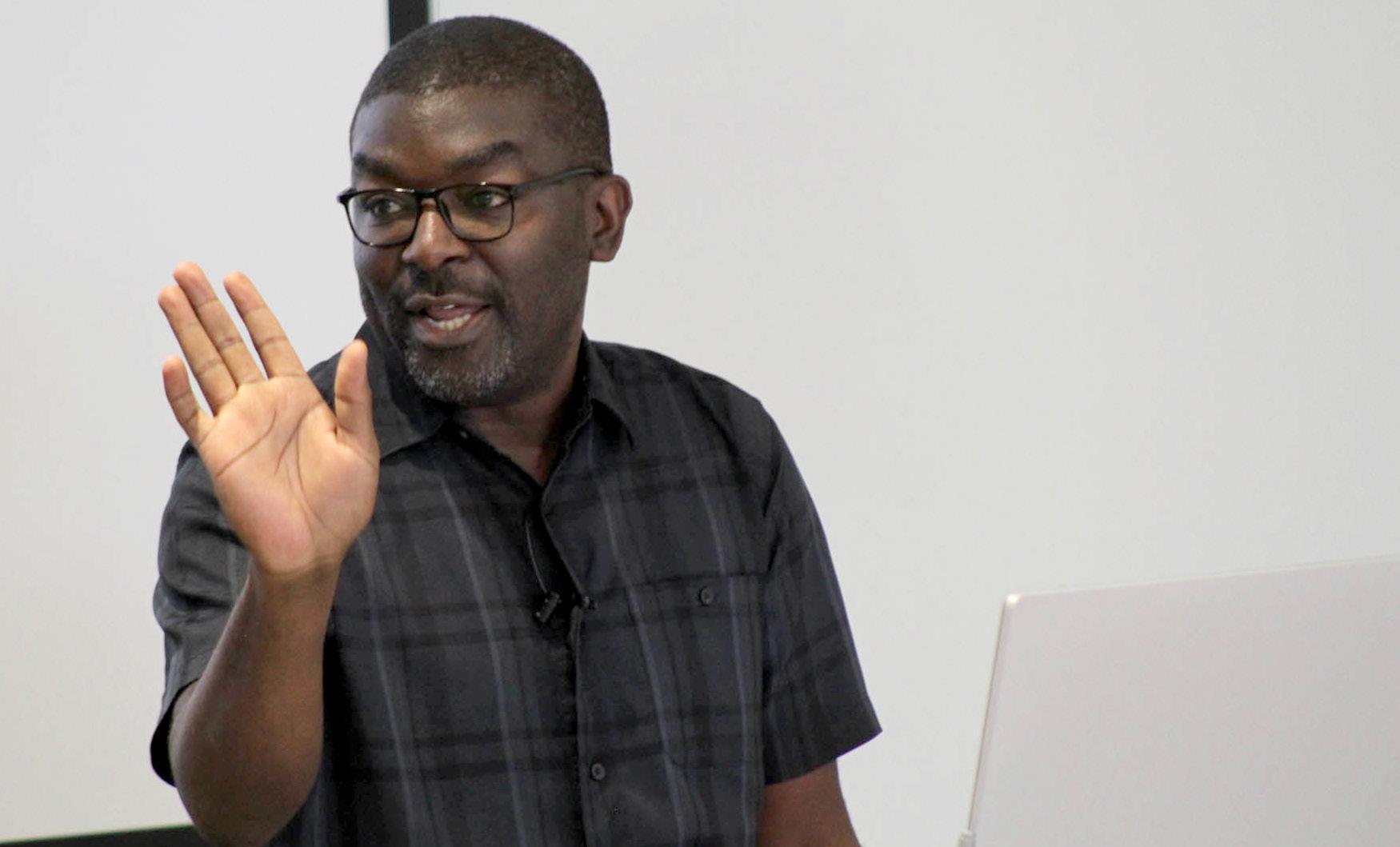
When asked about his experience at USU, Otieno said it has been fun because he is teaching courses he loves and engaging with students in class.
He also said he has settled fast because of the support of his colleagues.
“My perspectives are broad. I come from a different culture, so some of my case studies, or scenarios or examples will have global orientation,” Otieno said. “But at the same time, I also try to make sure that I connect with what is happening locally so that stu dents can connect with them.”
Matthew Meng, assistant professor of marketing in the Jon M. Huntsman School of Business, shared simi lar positive feelings about his six years at USU.
Meng grew up in Shepparton, Australia, a rural city in the state of Victoria. He moved to Boston in 2012 and Utah in 2017.
Meng said his experience at USU has been great.
“I love the students here, and my colleagues are very supportive of what I do with research as well,” Meng said. “The department is good, and just the business school itself has a great vision for the future, and I’m very excited for things here.”
He also said the university support network helped him adjust to life in Logan and everyone was very helpful in making sure he was settled when he first moved.
USU student and human resources office assistant Glee McKnight said out-of-state faculty bring important perspectives.
“I haven’t had any foreign professors, so most of the time I don’t know where my professors are from,” McKnight said. “But I think that no matter who it is or where it is, it’s always good to have different perspec tives and people from all around the world.”
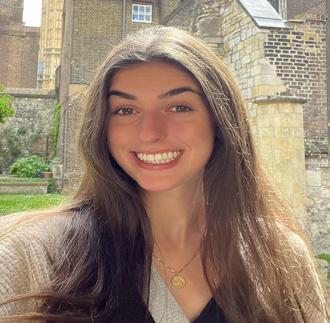
Kate Stewart is a junior studying journalism and marketing. She is from the Portland, Oregon area. Kate loves all things family, friends, thrifting, outdoors and dark chocolate.
— Kate.Stewart@usu.eduStudent-run newspaper for Utah State University since 1902. Reporting online 24/7. Printed weekly during the school year. FREE SINGLE COPY THE BOARD

Darcy Ritchie managing editor editor@usustatesman.com 435-797-1742
By Alivia Hadfield NEWS STAFF REPORTERUtah’s century-old flag is getting an update.
In June, 5,307 potential designs for the new state flag were submitted to the Utah State Flag Task Force. The com mittee has now whittled it down to 20 entries.
All flag submissions needed to follow var ious rules, one being to use the standard color palette: blue, gold, orange, red and white.
Each of these colors represents something about the state. For example, orange and red represent Southern Utah’s red rocks and the concepts of strength and persever ance.
Blue represents freedom, knowledge and Utah’s skies and lakes. Gold stands for prosperity, happiness and the desert, and white is for Utah’s snow-capped mountains, salt, peace and truth.
Along with specific colors, flag designers needed to include meaningful symbolism and keep their designs simple — the com mittee wanted a design anyone could draw from memory.
These rules have left the committee with 20 final designs. Now, the only task left is to choose the winning flag.
This decision has been left to the gener al public. Utah residents are encouraged to vote on the Utah State Flag Task Force website by Oct. 5.
Cache Valley residents can also view the flags and vote by stopping at the Cache Valley Visitors Bureau.
Karina Brown, a policy analyst for Cache County executive David Zook, shared her thoughts on local residents voting at the visitor center.
“It’s to show unity. That’s also part of democracy — to give our input — so I think it’s valuable,” she said.

After voting closes on Oct. 5, the top five flag designs will be reviewed by a subcom mittee. Residents can expect to see the final flag design proposed to the Utah leg islature by early winter.
David Munk, a U.S. institutions professor at Utah State University, said choosing a new flag is about giving people an oppor tunity to “feel connected to their govern ment.”
“This seems to be a good opportunity for all of us as Utahns to consider what it means to be a Utahn and then to weigh in,” Munk said.
According to the Utah State Flag Task Force website, Gov. Spencer Cox and other legislative leaders felt a new state flag would represent “who we are now” while “honoring and building upon our history.”
Munk said beyond connecting citizens to government, the flag’s symbolism is an important and intentional message.
“I think symbolism is an under-appreci ated part of any society,” Munk said. “It also is a way of communicating what Utah stands for to the rest of the world.”
The task force’s website shares a poll run by Y2K Analytics asking Utahns about their thoughts on the current state flag.
The poll data shows 42% of Utahns said the current flag did not represent them, while 41% of Utahns said it did. The remainder were unsure.
When asked if they supported or opposed the redesign of the flag, 21% of respon dents were in strong support, while 24% said they strongly opposed. 29% neither supported nor opposed the redesign.
The website states the poll results were “evidence that it’s time for a conversation about who we are as Utahns.”

Although the selection of a new flag is nearly completed, Utahns concerned about losing the current state flag to history need not worry — the flag task force has plans to renew the current design as the gover nor’s flag.
Alivia Hadfield is a first-year student who loves being an Aggie. Alivia’s other passions include songwriting, reading and competing in pageants.
The Utah State University Blanding campus has established a fast-paced, industry-based Certified Nursing Assistant program.

The program is targeted at people who are already hired and working in healthcare but who have not received official training or certification.
The program is six weeks long, and participants meet two to three times a week, along with one weekend for clinicals.
During the pandemic, there was an increase in the need for nursing assistants. This demand led to peo ple getting hired without training or certification. In Blanding, most were hired to work in local care centers. Others found themselves taking on healthcare roles with family members in the home.
“What happened during the pandemic was, especially down here on the Navajo Nation, people were starting to care for their family members,” said Teryn Lyman, the health professions coordinator and adviser. “Not pro fessionally, not as a job or anything. It’s just that they take care of their elders.”
But shortages in health care workers are not unique to the pandemic — the Navajo Nation and rural areas were already facing them.
Mindy Gurley, an instructor in the program, said the
program will help with current need in the Navajo Nation.
“This will allow those working in that area to provide much needed care,” Gurley said. “Several of our students are already working on the Navajo Reservation and will be certified soon.”
The program can help people take previous experience and knowledge from assisting family members and turn it into a certification and a job.
Since the program is so rapid, participants’ previous experience in the healthcare industry is a benefit.
“It’s very fast paced,” Lyman said. “They have to learn a lot of information quickly, but where they have already been working, hopefully it’s a little bit easier for them.”
The program exists to make sure participants receive the proper training and education to pass the certifica tion exam.
“There’s already a lot of people doing this work,” Lyman said. “They know how to generally take care of a loved one or an elder, but there are things that you would need to know — detailed things like respirations and heart rate.”
The information taught in the program is the same as what is taught in the 16-week CNA programs at the Blanding, Moab and Price campuses.
The condensed format allows students to get certified and quickly get back to work or start working. Once
they graduate from the program, they take the state test and have the opportunity to receive their certification.
Gurley said CNAs have a vital role in the healthcare industry and can provide needed care where there is a shortage.
“They are hands-on with patients and at times go to their homes or work in long-term care centers and assisted living facilities,” Gurley said.
Lyman said that funding is available for this program through the USU Custom Fit program.
“USU pays 50% and whoever is sponsoring them, or whoever they are working for, will pay the other 50%,” Lyman said. “They don’t have to pay for this program at all.”
The program has finished training its first cohort and will start the next group on Oct. 10.
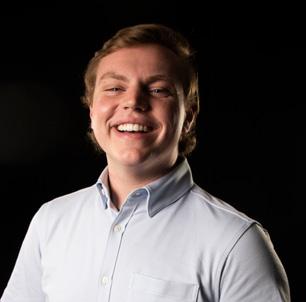
Carter Ottley is a junior studying journalism and political science. When Carter isn’t writing for the Statesman, he enjoys Chili’s, reading and Imagine Dragons.
— Carter.Ottley@usu.eduUtah State University’s Logan campus has imple mented measures to include students by imple menting gender-neutral bathrooms. Campuses across the state have similar inclusion plans.
Michelle Bogdan-Holt, the director of USU’s Office for Diversity, Equity, and Inclusion, helped spearhead the project in 2018.
“Our mission here is to create a safe and inclusive space for all students,” Bogdan-Holt said. “Anything that we can do as an office to forward that goal and that vision, we are going to do our very best to try to accom plish that.”
According to Jordy Guth, the director of USU Facilities Planning and Sustainability, USU has over 100 all-gen der bathrooms, most of which were implemented in 2019.
Guth said she began the project by changing the sig nage on single-stall bathrooms to say, “All gender.”
The bathrooms also fit the guidelines of the American Disabilities Act, and many have lactation rooms near them.
“It’s not just for people who don’t fit the binary. It’s for literally anyone who uses the restroom,” said Jack Thacker, a USU English student. “It’s just more conve nient for everybody.”
According to Guth, the Logan campus will apply for capital improvement funding during the legislative ses sion to put in more inclusive bathrooms.
Bogdan-Holt and Erika Lindstrom, the Gender and Sexuality coordinator, have also updated USU’s cam pus map to show students the location of all-gender restrooms.
According to Latrisha Fall, the program coordinator and assistant director for the Center for Intersectional Gender Studies and Research, the announcement of new bathrooms has helped several students.

“It’s helpful for students to be free of the pressure of navigating which bathroom to use. It sets a tone that USU cares, especially (that) the administration cares about the students,” Fall said.
Fall said the Roosevelt campus has a gender-inclusive bathroom, and the Vernal campus is building one.
Lindstrom said that transgender and non-binary students have talked with her about the fears of using binary bathrooms. She said some have experienced harassment using restrooms that align with their gen der identity.
“I’m lucky because no one bothers me if I go into a women’s restroom. But it feels a little bit wrong. Going to gender-inclusive bathrooms doesn’t feel wrong,” Thacker said.
In 2016, USU Eastern began implementing the restrooms. Now they have one in nearly every build ing, according to Cameron West, the Diversity, Equity, and Inclusion coordinator. USU Eastern is working to implement bathrooms in the three remaining build ings.
West said that many USU Eastern students pushed for change, especially to put a gender-inclusive restroom in the student center.
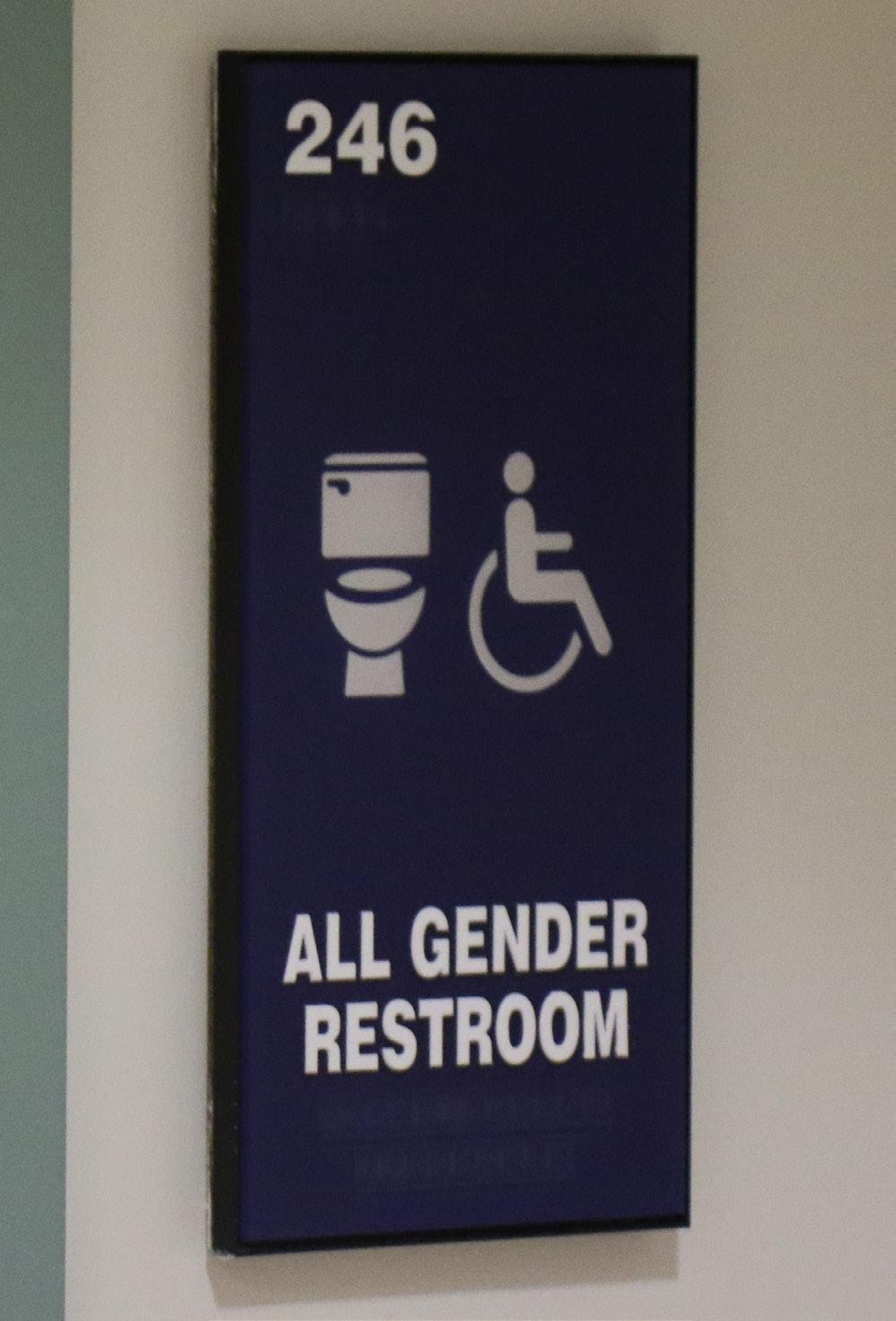
“That’s been a huge impact for students because they’re big drivers,” West said.
After the students petitioned for an all-gender restroom in the student center, they received the fund ing necessary to build it.
According to Timothy Olsen, the director of students in the Brigham City Region, the Brigham City campus has two gender-inclusive restrooms, and the Kaysville campus has one.
“It was a priority for students and leadership to make that happen and make sure that we were creating an inclusive environment for all those who are on our campuses,” Olsen said.
Kellie Miles, Tooele’s student success coordinator, said that there is one gender-inclusive restroom in USU Tooele, and there are plans to build another in the main campus building.
Joan Miller, a classroom facilitator in Moab, said USU Moab has two gender-inclusive restrooms that com ply with ADA guidelines.
“I think all campuses are working toward bettering, knowing that there’s still a lot of work to be done,” Fall said.
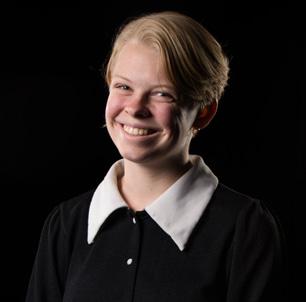
Jenny Carpenter is a junior studying journalism, Chinese and English. In her spare time, she loves writing novels, reading novels and watching Netflix.
— Jenny.Carpenter@usu.edu
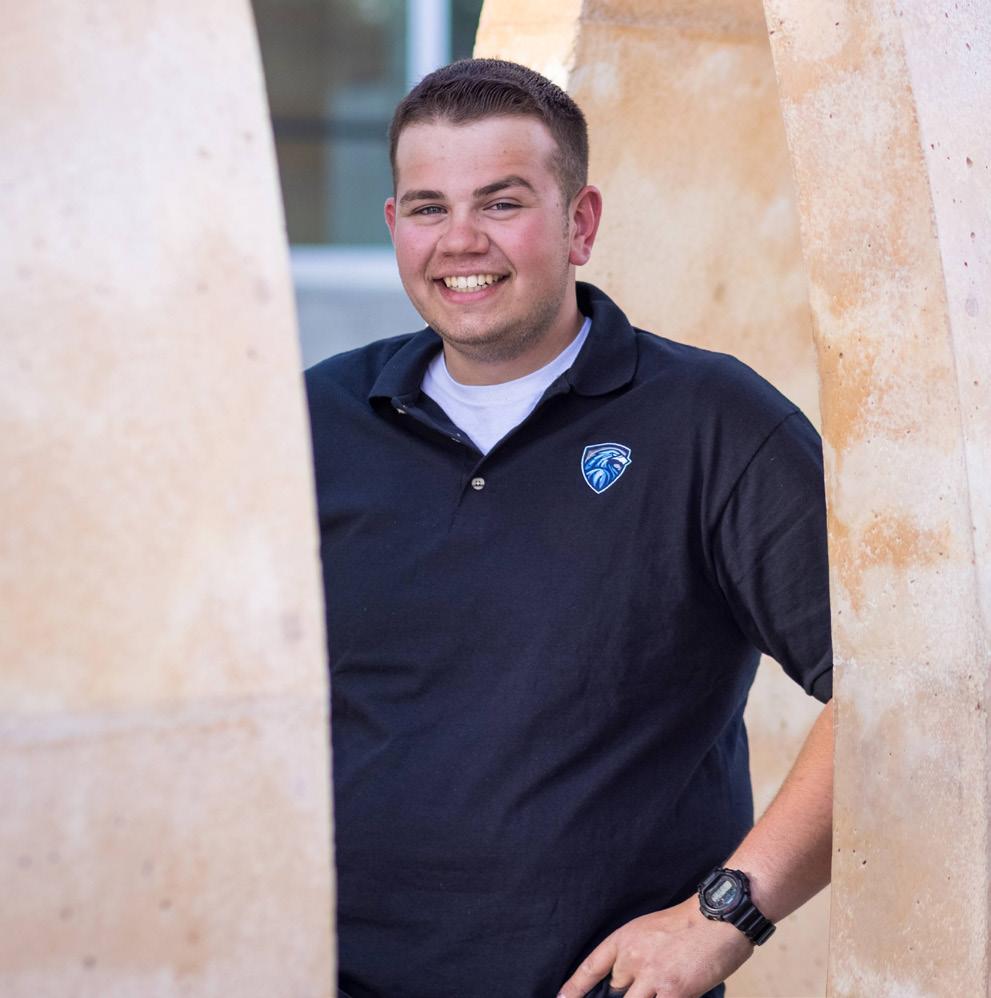 By Janelle Bates USU EASTERN EAGLE
By Janelle Bates USU EASTERN EAGLE
After winning second place in the American Welding Society Weld Trials in March, Jordan Packer, a junior welding student at Utah State University Eastern, will represent the United States in the WorldSkills 2022 Welding competition in Cleveland, Ohio in October.
“It is honestly hard to describe how excited I am to be representing my country at this level. This is a once in a lifetime opportunity and has been my entire life for the last year and half,” Packer said. “This will make me the first U.S. Welding competitor to compete on U.S. soil in 30 years.”
Austin Welch, assistant professor of welding at USU Eastern, stressed the significance of Packer’s achieve ments and the importance of his competition at WorldSkills.
“For Jordan to achieve what he has – to have been selected to represent the United States at WorldSkills –he had to completely devote himself to accomplishing one single goal,” Welch said. “For the past year Jordan has spent a minimum of 60 hours per week practicing, as did many others who Jordan defeated to earn this privilege. ‘Hard work’ is an insignificant way to describe the sheer magnitude of what it took for Jordan to get where he is. There have been a total of 16 WorldSkills welding contestants from the United States since 1991; Jordan’s current position as a welding contestant at WorldSkills is more exclusive than any Olympic event. There is one spot, and one spot only. A higher level of competitive welding does not exist.”
In 2021, Packer won the school’s indi vidual welding competition earning the right to represent USU Eastern at the State level. Representing USU Eastern in the virtual SkillsUSA State competition, he live streamed his performance for the judges and took gold. After his win, he went on to represent Utah for the SkillsUSA National Welding competition where he placed 11th. This is where he and 40 others were invited to compete to represent the United States at the international level.
While Packer has been welding at the competitive level since his sophomore year of high school, the Provo native grew up on a farm and was around welding and metal
work his entire life.
“During my freshman year of high school, I took on the challenge of restoring a 1941 Ford 9N tractor,” he said. “By the end of my freshman year, I needed to do some welding on this tractor and begged my dad to teach me how to weld. I fell in love with it the first time I struck an arc, which led me to take a class sophomore year of high
school and was completely hooked.”
During the weeks leading up to the WorldSkills compe tition, Packer will put in at least 90 hours of practice per week, both working on his own and with other welders including Chandler Vincent, United States Weld Expert.
“Chandler also came from USU Eastern and represented the U.S. in 2017, so we continue the legacy of USUE not only producing nationally renowned but also internation ally renowned welders,” Packer said.
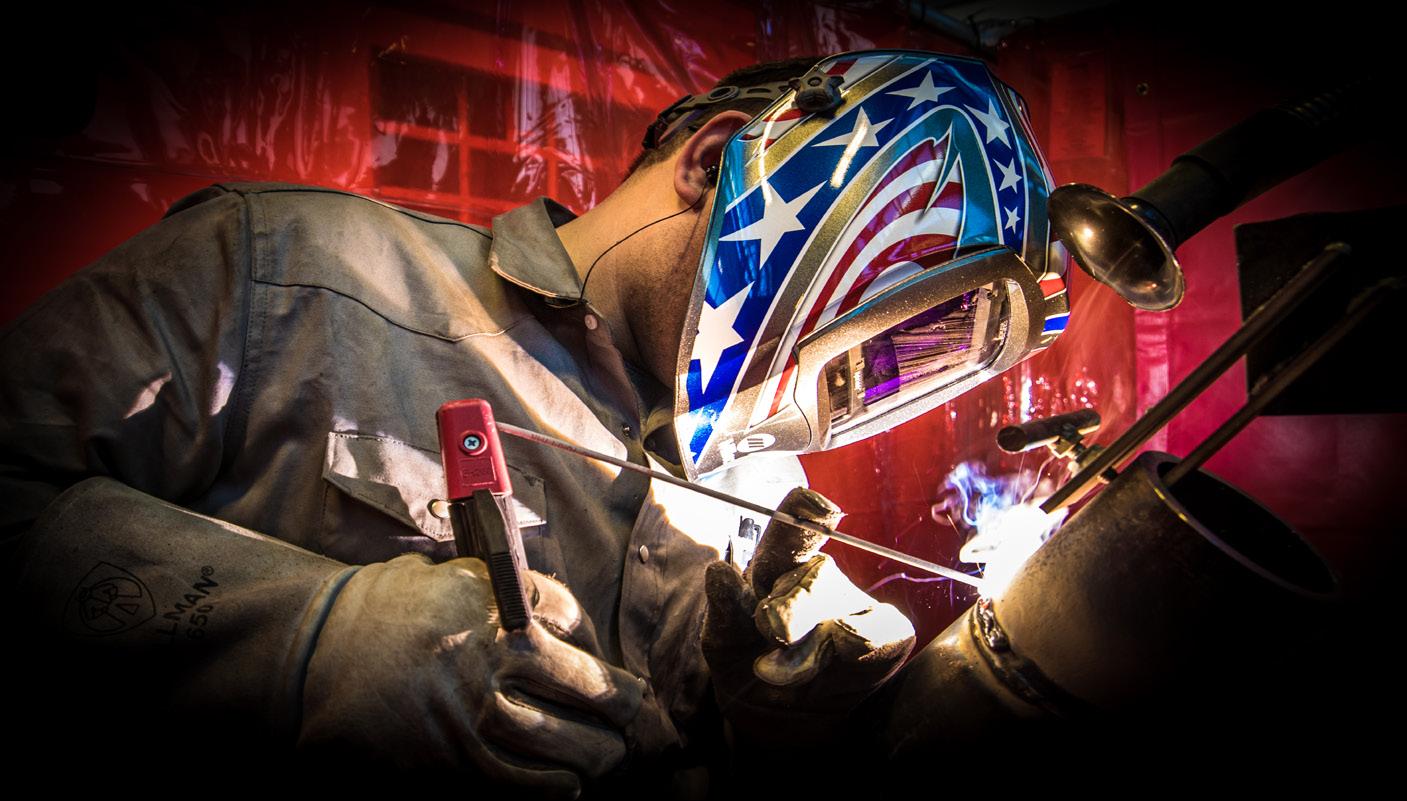
“The criteria Jordan is held to is infinitely stricter than anything we would refer to as an ‘industry standard,’” Welch said. “Some of the criteria is so absurdly strict that it is debatable whether or not it is even possible to satisfy by any welding process or technique that currently exists – yet he is still held accountable for it. The quality of his work is at such an elite level that some of it exceeds what even modern automated (robotic) welding equipment is capable of. I could describe him as the ‘Babe Ruth of welding’, but that’s not really accurate. He’s better than that.”
Packer is committed to his rigorous training and moti vates himself with the motto, “make it worth it.”
“We can’t control everything that happens to us, but we can control how we react to it,” he said. “Whether it's heartbreak or loss or even if it's a less than desirable circumstance we are stuck in, we have to make it worth it. Make feeling that pain worth it. Make that bad circumstance into a good opportunity. Live life to the fullest with the hand we are dealt and make it worth it.”
Packer has one more semester at Eastern and will be graduating with an associate of science and an associate of applied sciences in welding. After completing his degrees, he will transfer to Weber State University in Ogden, Utah, to pursue a bachelor’s degree in manufacturing engineering with a welding emphasis.
Packer plans to start his own business and hopes to give back to the welding community he says gave him support, connection and opportunity for growth.
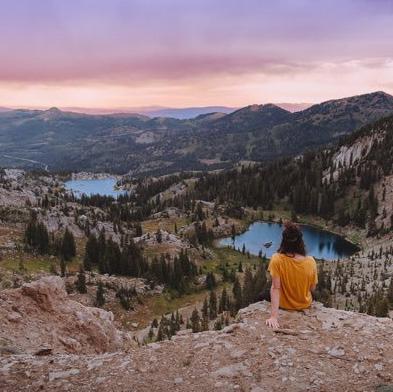

When he isn’t welding, Packer enjoys spending time in the mountains hiking, hunting, shooting and exploring dirt roads.
— janelle.bates@usu.eduPROVO, Utah —
The Aggies and Cougars battled for the Old Wagon Wheel for what could be the last time on Sept. 29. BYU took home the trophy with a final score of 38 against USU’s 20.
Next season, BYU will transition to the Big 12 from independence.
The teams were scheduled to meet four times between now and the 2026 season, but after the change in con ference for BYU, the possibility of games between the schools will be dependent on scheduling and whether or not the teams are willing to arrange a game or series.
“It’s sad. It’s a tradition — it has to continue,” said USU alumnus Jay Larson.


The rivalry got its nickname when the Old Wagon Wheel trophy was created in 1948. Given by the two main fraternities of both schools, the traveling trophy has been passed back and forth between schools, with Utah State dominating 18 of the first 27 games played. Since then, BYU holds an advantage of 42-25.
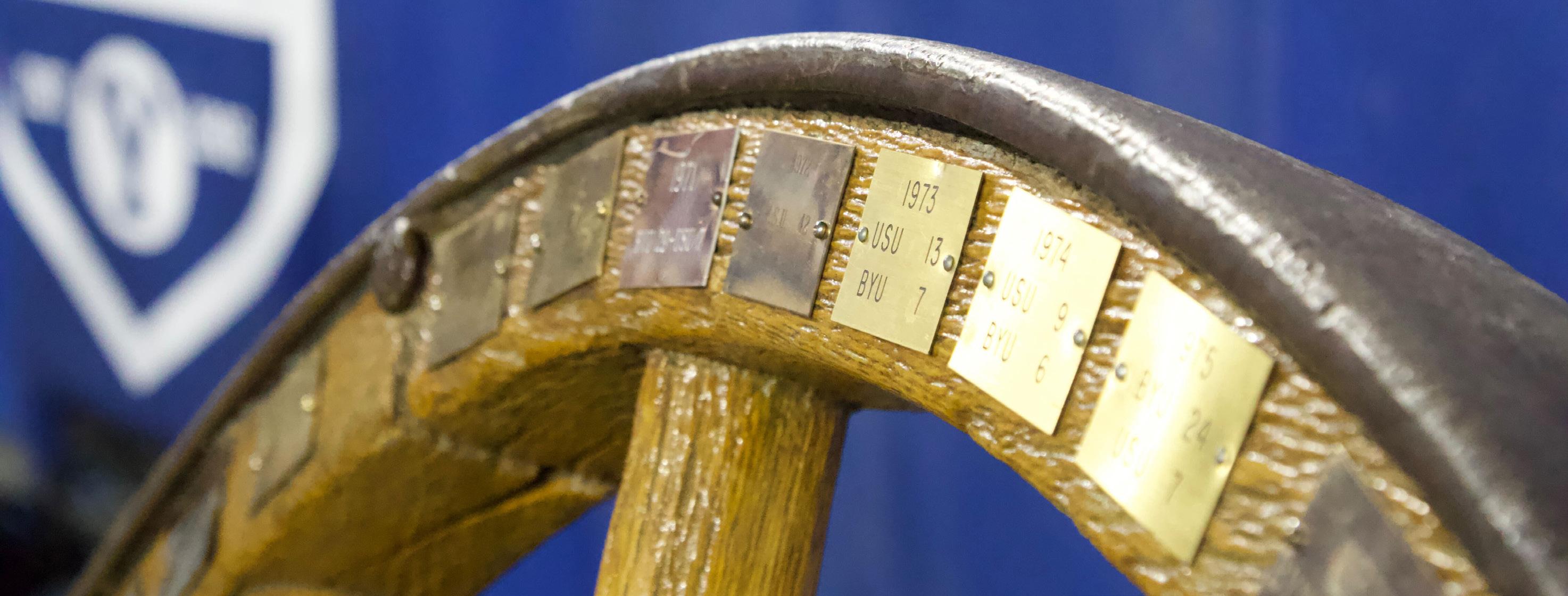
But not every fan has given up hope.
Sam Lapuaho, father of USU offensive lineman Weylin Lapuaho, said, “I’m always hopeful. You got to play the game, you know? You never know.”
I can’t believe Lizzo decrypted a secret message on the back of the Declaration of Independence using James Madison’s crystal flute.
The game marked the 91st faceoff between the teams; the first-ever game between the schools took place in 1922.
Recently, the Aggies have won some of the most notable meetings, beating the then No. 18 team 35-20 in 2014 in Provo.
Others include consecutive Utah State wins in 2017 and 2018 for the first time in 44 years. The Aggies hoped to take home the Old Wagon Wheel after two consecutive losses to BYU, including a 34-20 home loss last October. But no matter the result, it won’t change how Aggies feel about their school.

USU student Josie Roderer said, “Being an Aggie, to me, means being a part of the best school in Utah, and in the country, and just having a great place to be and a great home to come to.”
Among the Utah State supporters were selected mem bers of the USU marching band, who came to show their support and to play for the team from the stands.
First-year saxophone player Benji Hansen said, “I’m just excited to be here and support the football team. Hope fully they can hear us play all the way up here. I just really feel for the football team — like, the guys put forth a lot of effort and they work hard, so I want to be able to back them up and recognize their effort.”
Aggie fans traveled not only from Logan but from other parts of the country as well to witness the fight for the
Old Wagon Wheel.
“We came all the way from Arizona for this game,” Larson’s wife, Jennifer said.
Among the sea of royal blue in the stands, pockets of diehard Aggie fans decked out in navy blue could be seen.
LaVell Edwards Stadium is named after former USU of fensive lineman, who went on to coach BYU in their 1984 national championship season. Edwards also coached the 1990 Heisman Memorial Trophy winner Ty Detmer.
Edwards’ connection to both schools seems to parallel the love of the rivalry from both sides.
BYU fan Michael Chase said, “I don’t think this will be the last game — it might be a couple years, but I hope it comes back. I love the rivalry games.”
The teams met with overall 2022 records of BYU 3-1 and USU 1-3. On Sept. 24, the Cougars met Wyoming and left with a 38-24 win. The same day, USU played UNLV, losing 24-34.
Despite the odds, Aggie fans showed up in Provo to support.
Second-year marching band member Claire Ott said, “I always want to support my Aggies. I’ll hold on to my glimmer of hope.”
USU student Morgan Young said, “Being an Aggie fan means showing your school spirit at all times.”
harry styles playing opposite florence pugh in don’t worry darling is giving secondary school production where the female lead is the hottest most talent ed girl in your school and her romantic costar is the one guy the drama teacher could convince to audition
@ben_rosen
it’s crazy that the two main weath erman responsibilities are 1) standing in front of a green screen and reading the tempera ture 2) surviving a category 5 hurricanePHOTO BY Sam Warner The Wagon Wheel trophy, pictured here at the game on Sept. 29, has been passed back and forth between schools since it was created in 1948.
Utah State University alumni and USA women’s national rugby union player, Hallie Taufoou, visited USU in September.
Taufoou and her teammate attend ed a USU women’s and men’s rugby team practice to run drills and give coaching tips. Their visit to USU was on route to Colorado — USA Rugby headquarters — to train for the up coming women’s rugby world cup in October in New Zealand.
“It is just so cool to see the progress,” Taufoou said. “When I was playing here, I did not understand how much I didn’t know, but these girls here are understanding things that I have just started to understand.”
Taufoou is from Meridian, Idaho and graduated from USU in 2018 with a degree in business administration.
Though her family is Tongan and rugby was known to her, Taufoou did not grow up watching or talking about rugby. Her interest piqued after watching her cousin play.
Taufoou grew up playing soccer and basketball, which she said instilled in her a need for team sports. In the beginning of her time at USU, she realized soccer and basketball were no longer her priority.
During a Day on the Quad event, Taufoou was approached by members of the USU women’s rugby team and decided to try out the sport. She was on the team for three and a half years, becoming president of the team in 2017.
“Since the first day of training, this was it. It’s a combination of every thing good about soccer and basket ball, plus contact,” Taufoou said.

Theresa Pitts-Singer, the USU wom en’s rugby coach, introduced Taufoou to the Summer Sevens program, which she took part in over four summers. During this time, Taufoou made connections with the national women’s rugby team. She signed with the American Rugby Pro Training Center in 2017.

After Taufoou graduated from USU, she moved to Leicestershire, England to play for Loughborough Lightning Rugby. Loughborough Lightning is the No. 1 women’s premiership rugby team in the East Midlands. They com pete in the Allianz Premier 15s, the top tier of the English women’s rugby
league.
During her time in England, was contacted by the coach women’s national rugby. the team was in November match against Canada. Worldwide, rugby is a male nated sport, and it originated Although women’s rugby increasing, Taufoou said ers experience disparities being shrugged off or simply “I am a quiet kid, so even with boys, I am still faster, skilled, but it’s easy for them look me because I don’t say But once I start playing, they I can do,” Taufoou said. “I have to show them; I hate
England, Taufoou coach of USA
Her debut for November 2021 in a
male domi originated as such. teams are female play like “always simply ignored.” even training faster, better them to over say anything. they see what “I hate that I hate having to
prove it.”
Historically, rugby was a popular sport in Europe and commonwealth countries. Its popularity in the United States has grown in recent decades.
“Rugby in England is years ahead of USA rugby because the women are fully contracted,” Taufoou said. “That is their full time job. and they get livable wages to do that.”
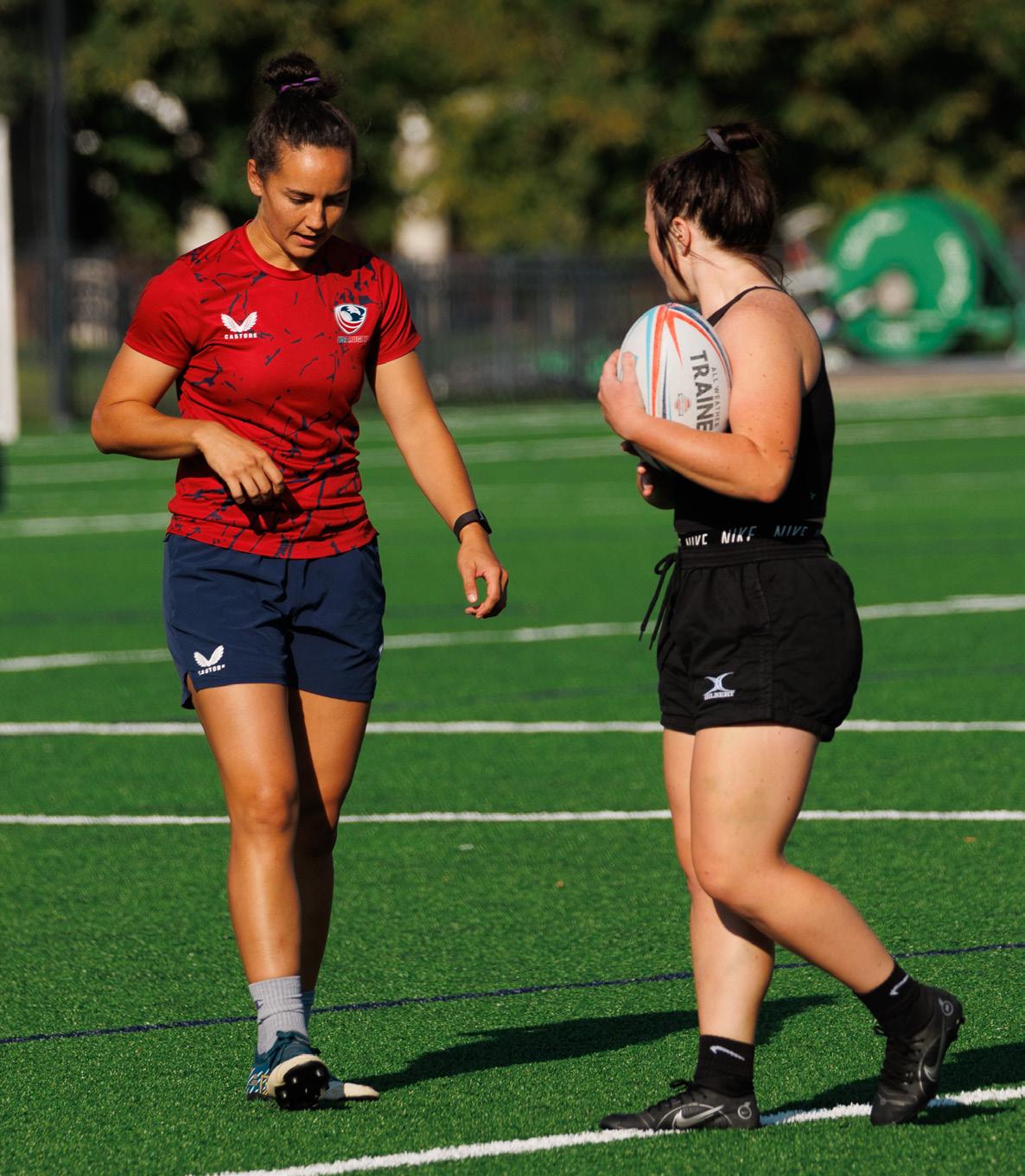
The first official women’s rugby team was formed in Scotland in the 1960s. Since then, women’s rugby has gained popularity across the world.

“A huge advantage is that there is nothing like it for women,” Taufoou said. “The men have the NFL; they have bigger monetary opportunities. Rugby for women is a huge advan
tage because it gives us a place to be ourselves. I feel like it is a good time to express yourself, whether you are male or female.”
Taufoou’s involvement in rugby happened over the span of about eight years. She said she did not anticipate playing rugby, let alone playing in the
world cup.
“Thank goodness I listened to how I felt about things,” Taufoou said. “Thank goodness I stopped caring about everybody else and started focusing on me and what I could be come. Who would have ever known?
I love playing sports, and I love to
give it my all, and so I just never would have known this is what would come of it.”
Taufoou said her biggest supports have been her parents, her family and Pitts-Singer.
Taufoou’s younger brother, Kenny Taufoou, is currently on the USU men’s rugby team. He played during high school and wanted to continue when he came to USU.
“I want to play professionally,” Kenny said. “Preferably the same level she is on, but we will see.”
Although Taufoou did not anticipate playing in the world cup, Kenny was not surprised.
“I don’t want to say that I saw it com ing, but she has a pretty good work ethic. So when she puts her mind to something, she can achieve it,” Kenny said. “It was always in the back of my mind.”

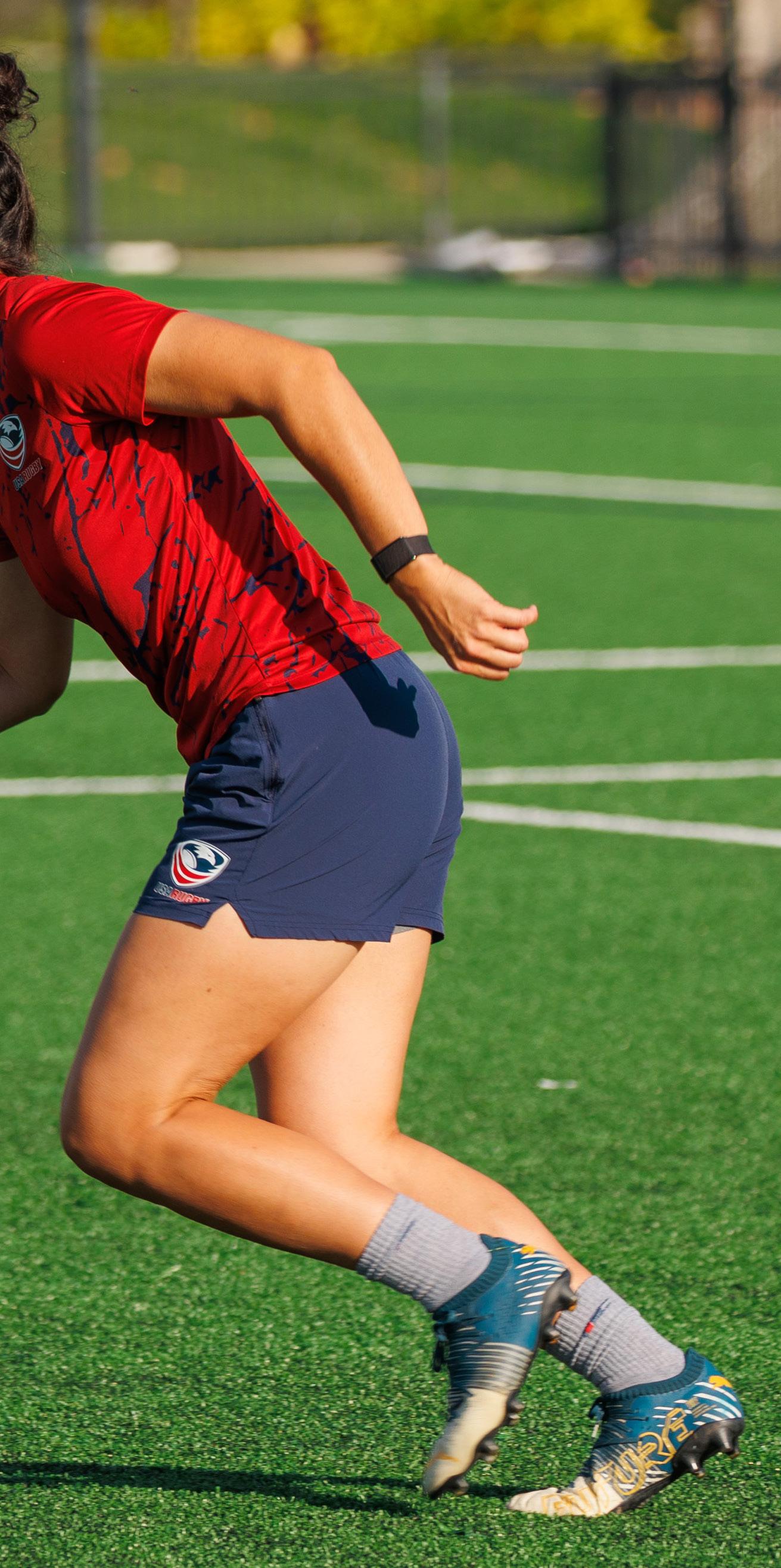
The USA women’s national rugby team will play Italy in their first match of the world cup.
“They just had a big win against France, but I think that is exciting,” Taufoou said. “Since I started, we have played the same few teams, but when we play new teams, it is very exciting. I have never played Italy.” Taufoou’s position is lock and back row.
The women’s rugby world cup in New Zealand begins on Oct. 8. Final matches will be played on Nov. 12.
Mid-September is a lively time of year as Utah State University and its statewide campuses cel ebrate Latinx culture by flying flags and hosting festivities.
Latinx Heritage Month is an annual celebration through out the nation. It spans from Sept. 15 to Oct. 15 and gives Latinx people the opportunity to show pride in their culture, heritage and traditions.
Central American countries such as El Salvador, Costa Rica, Nicaragua, Honduras and Guatemala declared their indepen dence from Spain on Sept. 15 of 1821, hence the starting date of Latinx Heritage Month.
The first celebration took place in 1968 and was observed for one week. Two decades later, the United States celebrates Latinx culture for a full month to honor those with roots in Mexico, Spain, Central and South America, the Caribbean, Portu gal and other Latin countries.
Numerous events were held on the Logan campus this month, including a flag fes tival, a theatrical performance about the Black Latina experience and a parade. This year, Logan’s chapter of Latinos in Action has adopted the motto, “Stand 4 More.”

For the president of Logan’s chapter of LIA, Annely Avila, this phrase is a call for leadership in the Latinx community.
“Our new theme this year means being a leader, not just for ourselves, but being able to represent others beyond USU,” Avila said. “One of our goals is to make our presence known within the community.”
Latinx Heritage Month unites students attending all of USU’s campuses across Utah.
Shari Linares, the historian of Logan’s chapter of LIA, said Latinx Heritage Month is an important part of her life and the lives of many other students attending USU’s campuses.
“It gives us a chance to celebrate our culture,” Linares said. “It gives us some time to be prideful.”
Nohemi Benitez, Linares’s co-historian, agreed. She said the Latinx Cultural Center has helped many minority students feel more confident during their college experi ence.
“It’s been helpful to have a place like the LCC that feels like home,” Benitez said. “Everyone’s more than welcome, and they include you in anything that they’re doing.”
The LIA hosts numerous activities throughout the year to engage members and bring the community togeth er. Some of the events include a paint slip-and-slide, a LinkedIn workshop and various mentoring programs.
Meladie Hernandez, the secretary of Logan’s chapter of LIA, said that many of the organization’s activities pres
ent not only fun community-building opportunities, but also valuable resources to the participants.
“We’re a little different in the fact that our organization doesn’t just focus on the social part of college,” Hernan dez said. “Socializing is a huge part of our organization, but we try to go deeper than that. We provide resources to our club members.”
At 15% of the population, the Latinx community is the largest minority group in Utah.
“This community has enriched the fabric of the U.S. as a nation in terms of our cultural contributions — economic and historical,” said Celina Wille, the associate director of the LCC. “It is the fastest growing demographic in the US. By the year 2065, one out of every five will be Latino.”
One of the goals of the LIA and the LCC is to increase the university enrollment of people of Latinx heritage.
“In the United States, our demographics are not repre sented throughout higher education and in graduation rates,” Hernandez said. “Highlighting a different variety of people who are successful and where we come from is super important.”
While the members of the Latinx community are excited to celebrate their cultures, many warn against appropri ation.
“I find that people will celebrate Latinx Heritage Month by watching the movie ‘Coco’,” Hernandez said. “Now, don’t get me wrong, that is a great movie. But we are so much more than just that. Our culture is a big part of who we are, but it doesn’t define us. We are so much more. We are smart and independent and hardworking. And we’re Latino, but we’re not only Latino.”
The members agreed that there are many ways to cele
brate Latinx heritage month — including making flags, trying new foods from different cultures and meeting new people within the community.
“It’s important to be informed of the different cultures on campus because there’s such a wide variety,” Benitez said. “When you’re able to go to events hosted by these organizations, you really get to know about them and what motivates them. It helps motivate you to keep going.”
One way to get involved with the Latinx Heritage Month at USU is to attend events run by LIA and the LCC.
Everyone is welcome at the Latinx Cultural Center, wheth er or not they have Latinx heritage. Members encourage others to stop by for snacks or a place to study where they can get to know the commu nity.
Victor Nguyen, the treasurer of Logan’s chapter of LIA, said he feels proud to be an officer of Latinos in Action.
“They showed so much pride in their history,” Nguyen said.
“And for me, being one of the only Asian kids in this whole city, they were able to show off their pride in their history and their heritage. It brought a lot of pride in myself, even if I wasn’t technically a part of the community.”
For those who want to get in volved in Latinx Heritage Month or Latinos in Action, LIA members said the best way is to visit the LCC and take part in the events.
“I would always recommend people join these kinds of cultural related clubs, no matter what your culture is,” Nguyen said. “It really doesn’t matter where you come from. It matters what you do to make sure that the culture you’re supporting is given a light that may have never shone in this area in the first place.”
Avery Truman is a first-year student pursuing environmental studies and geog raphy. She is passionate about astronomy, writing and reading science fiction and learning about wildlife.




 By Caitlin Keith LIFESTYLES STAFF REPORTER
By Caitlin Keith LIFESTYLES STAFF REPORTER
This year, Utah State University started a statewide student government in an effort to unify USU’s statewide campuses.
During January and February, USU students voted for the 2022-23 USU Student Association officers. This time, it wasn’t only students on the Logan campus that were voting. USU students across the statewide campuses voted for the Executive Leadership Board.


This is the first year the USUSA Executive Leadership Board serves all of the statewide campuses.


Clara Alder was elected as the USUSA president for all campuses of USU.

“Within the last year, we have changed our constitution, which unites all of our student body from across the state,” Alder said in a phone interview. “So from Monument Valley to Logan, from Toelle to Uintah Basin. We are a unified stu dent body, which is one of the most remarkable things ever.”
Each of USU’s campuses has its own executive vice presi dent to advocate for the students’ needs. Each vice president works with Alder and her cabinet to help improve USU across the state.

Hunter Warren is the USUSA vice president at USU Blan ding.
“I do feel like we have a lot more voices to our main campus now since we’re directly working with the USUSA president and the executive vice president up there and the student advocate,” Warren said in an interview over Zoom. “So I feel in that way, we’re more represented.”

Each USU campus will have a float in the upcoming home coming parade in Logan.
USU Brigham City and Kaysville held a retreat in Sep tember for their student officers in Bear Lake. Jasmine Sorensen, Brigham City’s USUSA vice president, said Alder
joined them for part of the retreat to help bring the regions together.
“She’s super supportive of all the campuses, so it’s been great so far working with Logan and her,” Sorensen said in an interview over Zoom.
Alder said this year, USUSA student government has the motto, “We are one.” They want to help connect all students and make sure they feel included.
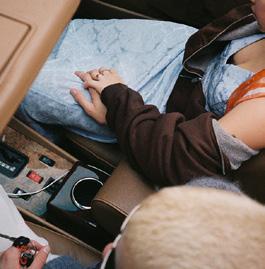
“My first year at USU I really struggled with feeling like I belonged,” Alder said and she doesn’t want any other stu dents to feel that way.
In that spirit, the main goal for this year’s leadership is con necting USU across the entire state. One way they are doing this is by sharing event calendars so students know about different opportunities across campuses.
According to Alder, they are also working on a resource guide for those students in the statewide regions to make them aware of what resources are available to them.
“It’s really been my favorite experience to figure out how to support each region in the way that best serves that region,” Alder said.

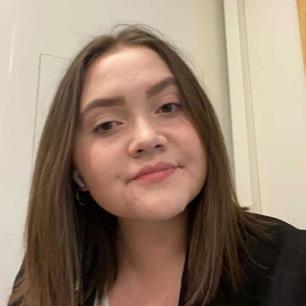
Gracie Jo is a senior double majoring in journalism and political science. Her show, Your Favorite Radio Show, features her favorite songs from the week and new artists she has found! Catch her on the air on Tuesdays at 3:00 pm!
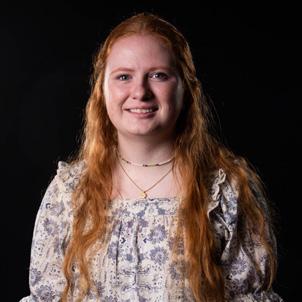
Caitlin Keith comes from Utah and is currently a junior studying journalism. Other than writing she enjoys watching and ranting about TV shows or sports, speaking German and eating snacks.
— A02312868@usu.edu
October is Domestic Violence Awareness Month, and Utah State University statewide campuses are acknowledging the month with fundraisers, events and seminars.
Students and staff are encouraged to wear purple every Wednesday to spread awareness and show support for survivors.
The university’s Sexual Assault and Anti-Violence Infor mation office, SAAVI, has organized all events for the month, kicking off with the Clothesline Project on Oct. 3 at the Logan campus.
The Clothesline Project is a visual display of t-shirts with messages and illustrations created by survivors of assault and abuse and those who have lost someone they loved to domestic violence. The project represents the violence statistics that are largely ignored.
The t-shirts will be displayed at Dining Services locations throughout the month and have been made by people within the Cache Valley community.
Utah State’s Sexual Misconduct Survey found that approximately 1 in 15 students and staff will experience relationship violence across all campuses.
Felicia Gallegos is the outreach and prevention coordina tor for SAAVI at campuses statewide.
“It all comes down to realizing that relationship violence is a lot more common than we think,” Gallegos said. She explained there are barriers to seeking help, and because of that, survivors do not always come forward in cases of domestic violence.
“It’s important to raise awareness that domestic violence happens and is very common,” Gallegos said. “It’s import ant that we draw attention to that, so that we can help people who are in unhealthy relationships recognize that what they are experiencing is not what they deserve.”
On the Logan campus, info booths about domestic violence resources in the community will be set up in the Taggart Student Center and Merrill-Cazier Library, alternating weekly throughout the month.
At the end of the month, USU is partnering with the Lau ren McCluskey Foundation to host a memorial walk along the Logan campus track to honor Lauren McCluskey, a student at the University of Utah who was killed by her dating partner on campus in 2018.
“I would encourage people to — even if it makes them a little uncomfortable — to expose themselves to what’s going on over the month,” Gallegos said.
SAAVI has two branches, the first being survivor ser vices, it provides confidential advocacy and therapy to survivors of any form of violence within the campus community — domestic/sexual violence, discrimination and hate crimes.
The second branch is outreach and prevention, which is focused on engaging in conversations about consent and healthy relationships. SAAVI organizes trainings, workshops and events and works with the Office of Eq uity to organize the incoming student sexual misconduct trainings.
Survivor services are available to everyone across the statewide system. Advocates can set up virtual meetings
from Logan or help get people connect ed to resources in their area.
Gallegos also helped facilitate and organize the same events across all USU campuses for October.
Another resource for students and staff is the Citizens Against Physical and Sexual Assault center. CAPSA is Cache Valley’s local domestic violence and rape recovery center. They are rec ognizing Domestic Violence Awareness Month with the tagline “Stand for Someone.”
CAPSA representa tives will be going to the city councils in Cache Valley to discuss what it means to stand for someone, the impact of domestic violence in the community and the importance of resources like CAPSA.
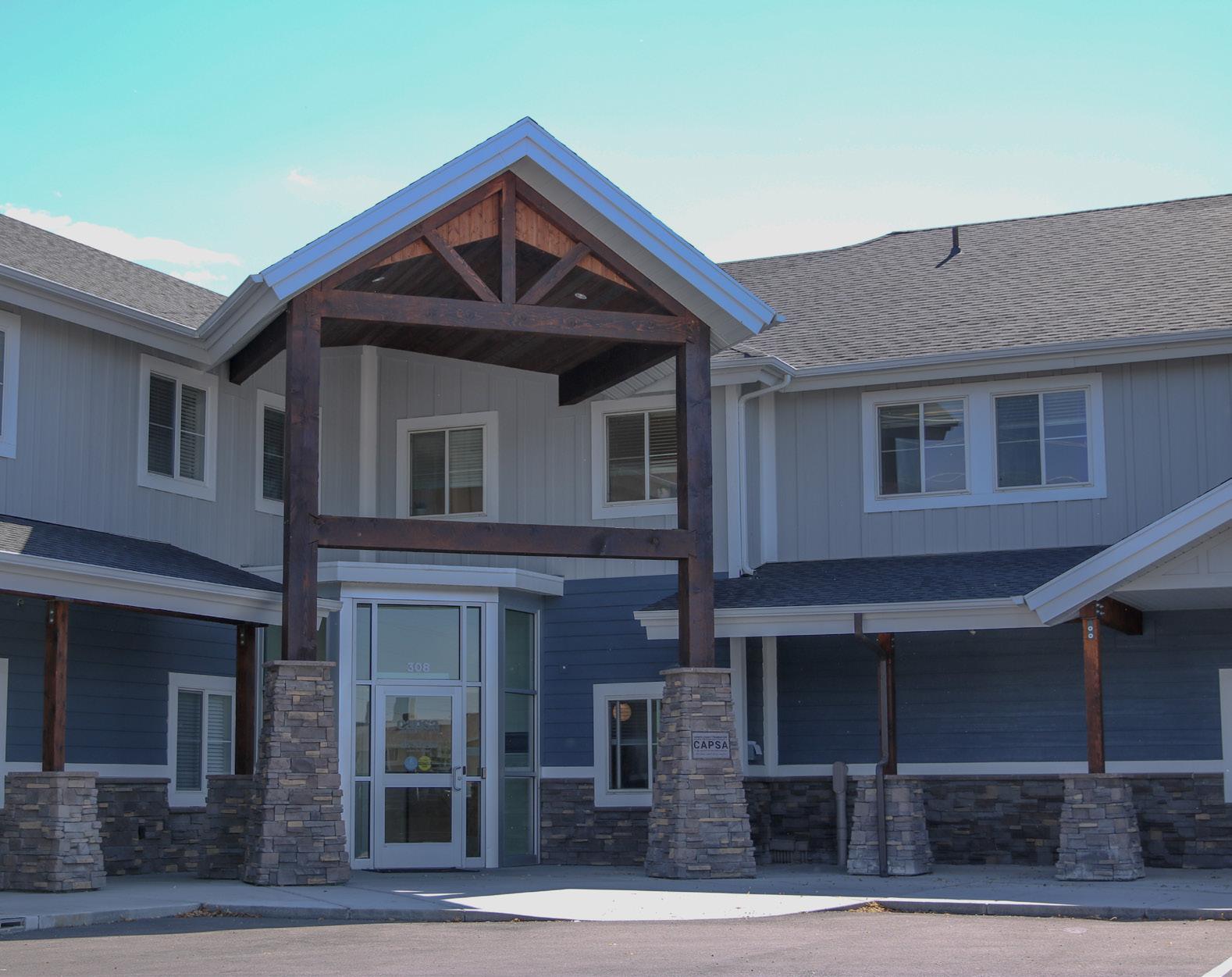
Students are encouraged to volunteer at CAPSA. Alyna Ohling is the community engagement director of CAPSA. She stressed that the center is a safe space for anyone impacted by domestic violence.
“We help men, women and children, no matter their age, or the culture that they come from or their back ground,” Ohling said. “When survivors come to us, we believe them, and our ultimate goal is wanting to help in the way they are needing help.”
To kick off the month, a wine-pairing fundraiser will be held on Oct. 1 at CAPSA, where attendees are encour aged to wear purple ribbons in recognition of and as a message of solidarity for domestic violence survivors.
“It’s multi-faceted, but when you look at the issues of domestic violence and sexual assault, they’re complex, and people don’t want to talk about it,” Ohling said.
“If we don’t talk about it, and we don’t address it as an issue, it’s hard to do anything to really stop the problem.”
Students across all USU campuses can refer to these resources for help and guidance:
Utah Sexual Violence Crisis Line 888-421-1100 | ucasa. org/resources
Utah Domestic Violence Hotline 800-897-5465 | udvc. org/resources
National Sexual Assault Hotline 800-656-4673 | rainn. org/resources
National Domestic Violence Hotline 800-799-7233 | ncadv.org/get-help
VictimConnect Resource Center 855-484-2846 | victim
connect.org
StrongHearts Native Helpline 844-762-8483 | strong heartshelpline.org
SafeUT Download the free app or call 833-372-3388 to chat or talk confidentially to a trained therapist. To get involved with SAAVI, sign up for the monthly newsletter at usu.edu/saavi/get-involved to find oppor tunities to volunteer.
Leah Call is a junior pursuing her degree in print journalism. In her free time, she loves finding new music to jam to and is always on the lookout for the perfect iced chai tea.

truly rewarding. We started in Logan and vis ited USU’s campuses and centers in Brigham City, Kaysville, Tooele, Salt Lake City, Roos evelt, Vernal, Price, Moab, Blanding, Monu ment Valley, Ephraim, Nephi, and Orem. As you might imagine, visiting so many places in three days can feel a bit overwhelming. But at each stop, we were greeted by Aggies who were excited and proud to show us the spaces where education is changing lives.
One of the things I learned is that some parts of the statewide campus experience are identical to those found in Logan. Others – as they should be – are unique to the com munities where the campuses are located. In Blanding, we were treated to homemade fry bread prepared by students, presented with Diné (Navajo) Sani scarves, and given a tour of the traditional hogan that was dedicated on campus in November 2021. The hogan provides students with a place to pray, conduct ceremonies, or just study and relax. The smell from the cedar in the hogan was amazing!
In Tooele, the campus is nestled at the edge of a residential neighborhood. The vibe from the students and staff we met was that of a close-knit community that welcomes outsiders and fosters a sense of inclusion. The USUSA representatives in Tooele are actively engaged in promoting this culture, as are USU alumni who live in the area. Both groups hold events like movie nights, swim ming parties, and the Blue Rock Run that encourage community involvement.
Irecently celebrated my five-year anniversary as an employee of Utah State University. The entirety of that five years has been spent working at the USU Uintah Basin statewide campuses in Vernal and Roosevelt. In April, I earned my Master of Business Administration from the Jon M. Huntsman School of Business. I attended every class over the course of two years from the Uintah Basin via interactive video confer ence (IVC) broadcasts and Zoom.
Despite my personal experience, I had no idea how robust, varied and welcoming USU’s Statewide Campuses are until this summer, when I was given a T-shirt with the words “We are One” emblazoned on it as I boarded a bus full of Aggies to travel more than 1,300 miles over three days.
The opportunity to join USU Student Association representatives, ad visors, and administrators on their annual Statewide Campus Tour was
Time and again on the tour I was inspired by the work Aggies are doing statewide in the classroom and their communities. For years I’ve heard phrases like “Aggies are everywhere,” and “We’re part of the Aggie family.” Visiting just 14 of the 30 USU campuses and centers across the state reinforced the truth of these phrases.
I believe we could all benefit from discovering the truth of these phras es for ourselves. To do that we must broaden our understanding of what it means to be an Aggie. So, my challenge is this: Take a road trip of your own, experience USU’s Statewide Campus system for yourself, and learn that We are One.
Vanessa Liesik is the director of Statewide and USU Online Recruitment. She works out of the USU Uintah Basin campus in Vernal. — vanessa.liesik@usu.edu
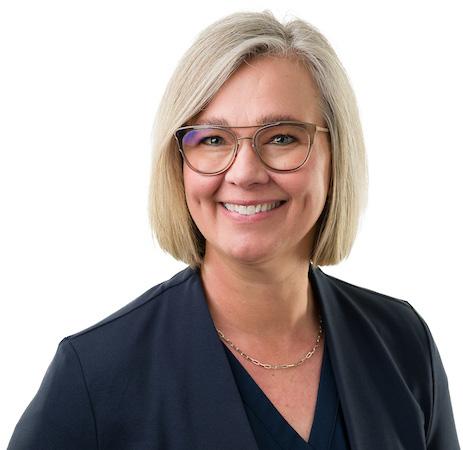
We would like to thank you for reading The Utah Statesman. We would also like to thank those who take time to reach out and let us know what they think about our content. We take feed back and criticism seriously.
Last Friday, we published a story about an anonymous email sent to The Utah Statesman that provided screen shots of messages from the Slack and Snapchat commu nication channels of a USU fraternity. These messages included sexual innuendos, remarks and jokes. We stand by our decision to publish this story. Everything in it is factually true, and everything subjective expressed in the story is attributed to a source. After receiving your feedback, we realized we needed to include more information in the original article, and clarification has been added to the online story about the screenshots we received.
To clarify further, the poll screenshot included in the story was one of seven screenshots we received. We chose to use this screenshot in the story because it was one of the least explicit. Other screenshots had remarks that were much more vulgar, which we were not com fortable putting into the newspaper. This was not clear enough in the original article, and it’s been updated to reflect this.
Because we send our paper to print on Thursday nights, we were not able to utilize the feedback in the printed article and make those adjustments, but the changes
were made to the online article Friday evening.
We also received feedback about the use of terms like “toxic masculinity” and “rape culture.” We want to note that these were the words used by our sources, and what is said by our sources does not reflect the opinion of the Statesman. None of our articles should ever reflect the opinion of the reporter, which is why everything in the article is attributed to a source. We are always grateful for sources, and we thank Amanda DeRito, Cole Lancast er and Coleton Richmond for taking the time to help us inform the community.
The Society of Professional Journalists Code of Ethics encourages journalists to “explain ethical choices and processes to audiences.”
The first tenet of the Code of Ethics is to Seek Truth and Report It. We stand by this story because everything in it is true, our sources are identified, we allowed the subjects of the coverage to respond to the story, and it prompted an open exchange of views. When we realized more context was needed in the story, we updated it.
Several messages of feedback cited the second tenet of the Code of Ethics, to Minimize Harm. This tenet advises journalists to minimize harm, not to avoid harm com pletely — because that’s impossible. Under this tenet, the Code of Ethics says, “Realize that private people have a greater right to control information about themselves than public figures and others who seek power, influence or attention.”

We chose to identify those who voted in the poll be cause we wanted to hold them accountable as members of a student organization within the Student Involve ment and Leadership Center, especially the individuals who hold positions of power and represent students’ interests at USU.
Regardless of your personal thoughts on the vulgar ity of the jokes, we believe messages like this are not appropriate in any communication channel for orga nizations within Student Involvement. Though the subject matter of this story may not seem newsworthy to everyone, someone was concerned enough about the way members of this fraternity were talking in their communication channels to reach out to us about it.
We encourage student organizations to take time to set a clear standard of what is and is not appropriate in communication between members, and we encourage everyone to be more mindful of the way they interact with others in university settings and communication channels.
If you’re curious about what else is included in the SPJ Code of Ethics, you can read the full code at spj.org/ ethicscode.asp.
If you are dissatisfied with our work, we do want to hear about it. We hope you’ll also reach out when we write things you like. The best place to direct feedback is to the reporter themselves or to our managing editor at editor@usustatesman.com.
If you ever feel the need to write a response to some thing we publish, we are always taking submissions for letters to the editor and pitches for guest columns. You can find more information about at usustatesman.com/ opinionpolicy.
Thank you for reading the Statesman.
— The Utah Statesman Editorial BoardIn the past few days, the world has witnessed the recent uprisings in Iran, sparked after a 22-year-old girl, #MahsaAmini, died in the custody of the government's so-called morality police. Since then, dozens of young Iranians, including several children, have been shot dead in the streets by the armed police force, and many more have been arrested while demand ing their basic rights to freedom of dress and freedom of expression. The government has essentially shut down access to the internet to hide the violent crackdown of the protests. Yet, the harrowing images and videos shared on so cial media show protestors (or even passersby) continuing to be beaten or killed by the state's armed forces.
In this unsettling and volatile situation, we ask that the Utah State community stand with the people of Iran and support the Iranian com munity here on campus and the larger Cache Valley. The Aggie family has a small but grow ing population of Iranian students, faculty, and

staff who are being directly impacted by these unfolding tragedies. Students are especially struggling to focus on schoolwork while following the news of the disturbing situation in Iran, and they are not doing OK. Many of them haven't been able to reach their loved ones for days as a result of the internet blackout. Some have even had family members or friends arrested. These circum stances are taking a toll on everyone's mental & emotional wellbeing, even if they don't say it out loud. Instructors and advisors working with Iranian students in any capacity should be mindful of the distressing situation and be willing to offer appropriate accommodations when necessary. Being flexible, offering deadline extensions, and reaching out is a small step the Aggie community can take to help. We also en courage USU CAPS to offer additional services to Iranian students seeking counseling and mental health support during this time.
Finally, we ask everyone in the Aggie family,
with any platform they have, to support the Iranian women fighting for their freedom of choice, and stand with all Iranians who are demanding their most basic human rights. Let's stand together for "women, life, and freedom."
— On behalf of Iranian faculty and students at USU
Sudoku puzzles are provided by www.sudokuoftheday.com.




Last week’s solution:

